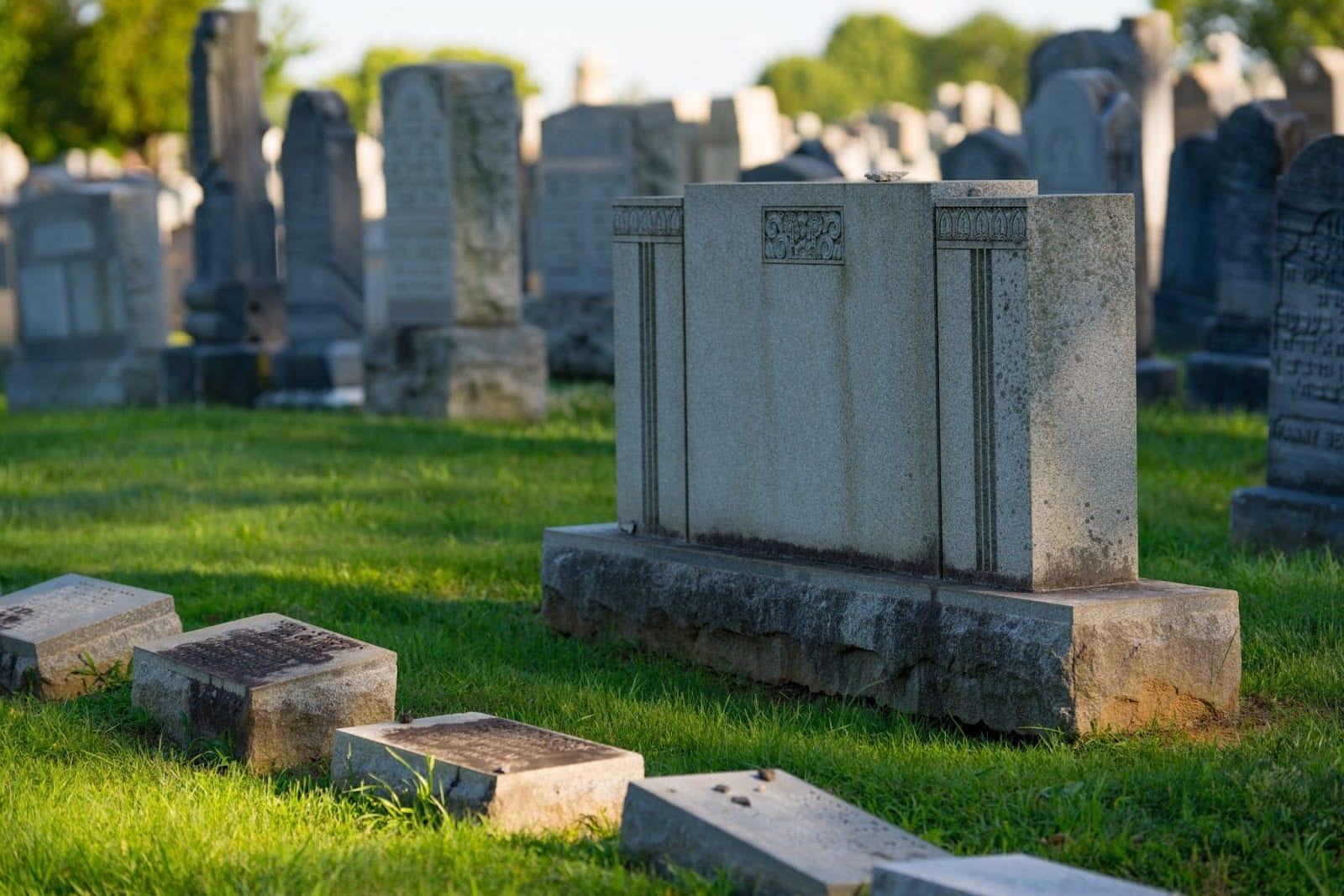Types of Cemetery Plots

Selecting the right type of cemetery plot for you is an important decision that allows families to create a meaningful and respectful resting place for their loved ones. With various types of burial plots available, understanding the differences can help individuals make informed choices based on personal preferences, financial considerations, and environmental concerns.
Some cemetery plots cater to individual burials, while others accommodate couples or family members. There are also options that focus on eco-friendly practices, ensuring minimal environmental impact. Regardless of the type, choosing the right plot can provide comfort and a lasting tribute to a loved one.
For additional guidance on cemetery regulations and consumer rights, visit the Federal Trade Commission.
Single Burial or Individual Plots
Single burial plots are designated for individuals who want a dedicated resting place. These plots are one of the most common options available in cemeteries, offering a traditional and straightforward burial arrangement. They provide an affordable and practical choice, making them ideal for individuals who do not plan to be buried alongside family members or spouses.
These plots are typically marked with a headstone or grave marker, allowing loved ones to visit and pay their respects. Because they require less space than multi-person plots, they tend to be more budget-friendly. Many cemeteries offer flexible customization options, such as different types of grave markers or personalized memorials, to honor the individual’s life and legacy.
Companion Plots
Companion plots are a type of cemetery plot designed to accommodate two individuals who wish to be laid to rest together. These plots are commonly chosen by married couples or close family members, such as siblings or lifelong friends. The burial arrangements can vary, with most companion plots placing individuals side by side, while some cemeteries offer double-depth plots where one casket is placed on top of the other.
One of the advantages of companion plots is the ability to create a shared memorial space, which can include a single headstone with both names or individual markers. Families selecting a companion plot should consider cemetery regulations regarding memorialization, as some locations may have specific rules about the types of grave markers allowed. Additionally, cemeteries may have specific conditions to prevent grave shifting over time, ensuring a secure and dignified burial arrangement.
Family Plots
Family plots provide a designated burial space for multiple family members, allowing loved ones to remain together in a shared memorial area. These plots can accommodate small family sections (typically 2-5 individuals) or larger designated areas for extended families (6 or more members).
Choosing a family plot ensures that future generations have a dedicated space for remembrance, fostering a sense of heritage and continuity. Families may opt for shared memorials, benches, or custom headstones to reflect their legacy. However, these plots require long-term planning, as space availability needs to be considered for future burials. Some cemeteries also have maintenance requirements or perpetual care fees to ensure the plot remains well-kept over time.
Cremation Plots
Cremation plots provide an option for those who have chosen cremation but still want a permanent burial site. These plots can be found within traditional cemeteries or specialized memorial parks designed specifically for cremated remains.
There are several ways to inter cremated remains, including:
- Traditional burial plots: A smaller section of a cemetery designated for urn burials.
- Columbariums: Above-ground structures with individual niches that house urns containing ashes.
- Memorial gardens: Outdoor spaces dedicated to cremated remains, often featuring shared or private markers.
Some cemeteries may require the use of a grave liner for cremation plots to maintain the integrity of the burial site. Families should also consider additional costs, such as urns, grave markers, or memorial plaques when planning for a cremation burial. For a detailed cost comparison, visit our cremation costs information.
Mausoleum Crypts
Another type of cemetery plot are Mausoleum crypts. These provide an above-ground burial alternative for those who prefer entombment rather than traditional in-ground burial. These structures, typically made of stone or concrete, house caskets within individual or family crypts.
Mausoleums come in various sizes, ranging from single-person crypts to large family chambers. Due to their durability, security, and prominence, these burial options tend to be more expensive than traditional ground plots. Some mausoleums are private, reserved for a single family, while others serve as community spaces with multiple crypts available to the public.
Mausoleum entombment is often chosen for its protection from environmental elements and for its ability to provide a distinguished final resting place. Additionally, many mausoleums include climate-controlled interiors and allow for visitation in all weather conditions, making them a preferred option for those who want a comfortable space for remembrance.
Veteran Plots
Veterans and eligible family members may receive burial benefits through government programs, such as the Veterans Pre-Need Program. These dedicated plots are typically located in national or state veterans’ cemeteries and provide a dignified and honorable final resting place for those who have served in the armed forces.
Veteran burial benefits often include:
- Free burial plots for eligible veterans.
- Government-issued headstones or markers at no cost.
- Ceremonial honors, including flag presentations and military memorial services.
While many veterans’ cemeteries provide these services free of charge, families should check eligibility requirements and availability, as space in national cemeteries may be limited. Some private cemeteries also offer discounted veteran burial options with additional services tailored to military families.
Green Burial Plots
Green burial plots are designed for individuals who prefer an environmentally friendly approach to burial. These plots prioritize sustainability by avoiding embalming chemicals and utilizing biodegradable materials, such as untreated wooden caskets or natural fiber burial shrouds.
Unlike traditional burial sites, green cemeteries encourage natural decomposition and land preservation. Many green burial grounds are located in conservation areas, ensuring minimal environmental impact. Some cemeteries allow tree or plant memorials instead of traditional headstones, offering a more natural tribute to loved ones.
Families interested in green burials should research cemetery regulations, as not all cemeteries support eco-friendly burial methods. Some states and local municipalities have specific requirements regarding burial depth, plot maintenance, and headstone alternatives.
Pre-Owned Burial Plots
One final type of cemetery plot is a Pre-owned burial plot, also known as reclaimed or resale plots. These are cemetery spaces that were purchased in advance but are now available for resale. Families may choose pre-owned plots as a cost-effective option, as these plots can sometimes be acquired at a lower price than newly sold burial spaces.
There are several reasons why pre-owned plots become available, including families relocating, changes in burial plans, or estates selling unused plots. Purchasing a pre-owned burial plot can also provide access to cemeteries that have limited new spaces available.
Before purchasing a pre-owned plot, it’s important to verify ownership, transfer policies, and any associated cemetery fees. Families should also check whether the plot includes perpetual care services, ensuring that the grave remains maintained over time.
How Much Does a Burial Plot Cost?
The cost of a burial plot varies significantly based on multiple factors, including location, plot size, and additional amenities. Understanding these cost influences can help families make an informed decision when selecting a final resting place.
Factors Affecting Burial Plot Prices:
- Location: Burial plots in metropolitan areas or high-demand cemeteries tend to be more expensive than those in rural locations. Prime locations within a cemetery, such as spots near walkways, scenic areas, or historical landmarks, can also increase costs.
- Size: Standard single plots are more affordable, whereas companion plots, family plots, or larger memorial sections come at a premium due to the additional space required.
- Amenities & Services: Some cemeteries offer maintenance packages, security features, and exclusive memorial options, all of which contribute to the overall cost. Plots with perpetual care agreements, ensuring long-term upkeep, are often priced higher than those requiring annual maintenance fees.
Families should also consider additional expenses, such as the cost of a headstone, type of grave liner, or burial vault, as well as administrative fees that may be charged by the cemetery.
When You Buy a Cemetery Plot, Is It Yours Forever?
Purchasing a cemetery plot does not always mean it belongs to you indefinitely. Ownership policies vary based on cemetery regulations, local laws, and specific agreements between the plot owner and the cemetery.
Types of Cemetery Plot Ownership:
- Perpetual Rights: In many cemeteries, purchasing a burial plot grants the owner the right to use it indefinitely. This is known as perpetual ownership, where the cemetery maintains the site permanently through a perpetual care fund.
- Time-Limited Leases: Some cemeteries, particularly in densely populated regions, operate on a lease system. This means the right to use the plot is granted for a set period, such as 50 or 100 years, after which the cemetery may reclaim or reuse the space.
- Cemetery Regulations: Policies can differ widely, with some cemeteries requiring ongoing maintenance fees or imposing restrictions on headstones, decorations, or memorial markers. It’s important to review cemetery contracts to understand any conditions that may impact long-term ownership.
Families should always check cemetery policies before purchasing a plot to ensure they fully understand the terms of ownership, maintenance expectations, and any potential restrictions.
How Can MERI Support?
Navigating burial options can be an emotional and financial challenge for families. At MERI, we provide an alternative to traditional burial methods by offering Full Body Donation, which not only alleviates funeral costs but also contributes to medical research and education. Our program supports families in several key ways:
Relieving Financial Burdens
The cost of burial plots, headstones, and other funeral expenses can be overwhelming. Our donation program eliminates many of these costs by covering transportation, cremation, and necessary paperwork, allowing families to focus on honoring their loved ones without the stress of financial strain.
Advancing Medical Science
Whole body donation plays a vital role in medical advancements, education, and innovation. By choosing this option, families can create a meaningful legacy, supporting the training of future healthcare professionals and contributing to research that improves patient care worldwide.
A Streamlined Process
Understanding the logistics of end-of-life arrangements can be daunting. We simplify the donation process, handling everything from paperwork and transportation to the return of cremated remains to the family. This ensures a smooth, respectful experience while supporting a cause that benefits countless lives.
There are many options for funerals and burials, allowing families to choose what best honors their loved ones while considering personal preferences, traditions, and financial needs. Learn more about whole body donation and how it can provide both emotional and practical relief.
